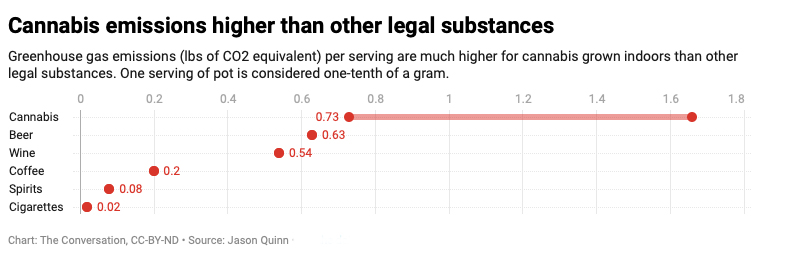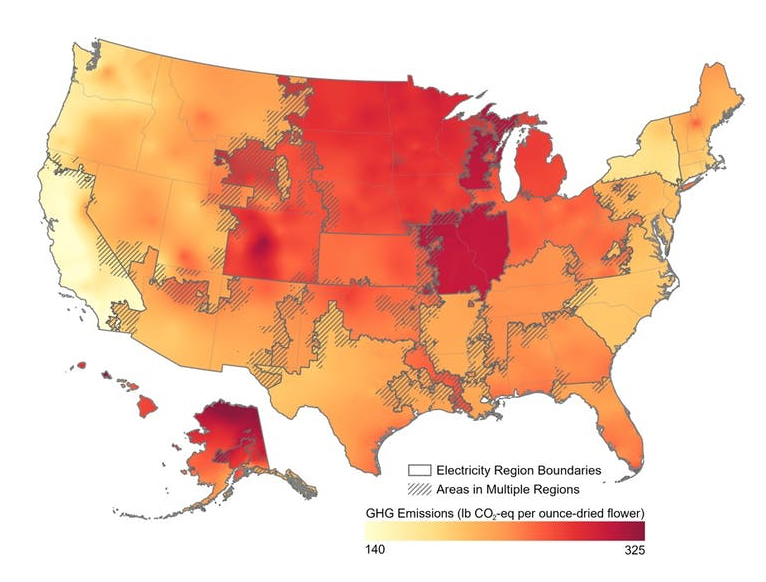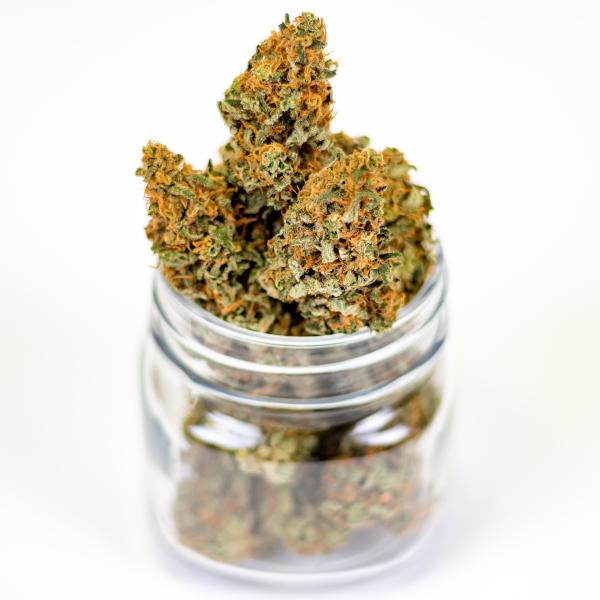The images are taken from an article found in this week’s, The Conversation by Jason Quinn and Halley Summers from the Colorado State University Sustainable Research Laboratory.
Growing pot indoors requires significant electrical energy to power the lights and air conditioning. It is more often grown indoors for legal sales because it improves the product's quality and consistency and is genuinely a cash crop susceptible to theft. When you factor energy costs in, here is how cannabis measures up with some of our other legal offerings.

And interestingly enough, Hawaii, a paradise for a growing plant, uses the greatest amount of energy, “324 pounds of carbon dioxide equivalent per ounce. That’s roughly equivalent to burning 16 gallons of gasoline.” Alaska, an area in Colorado and the Midwest, round out the top four carbon footprints.





